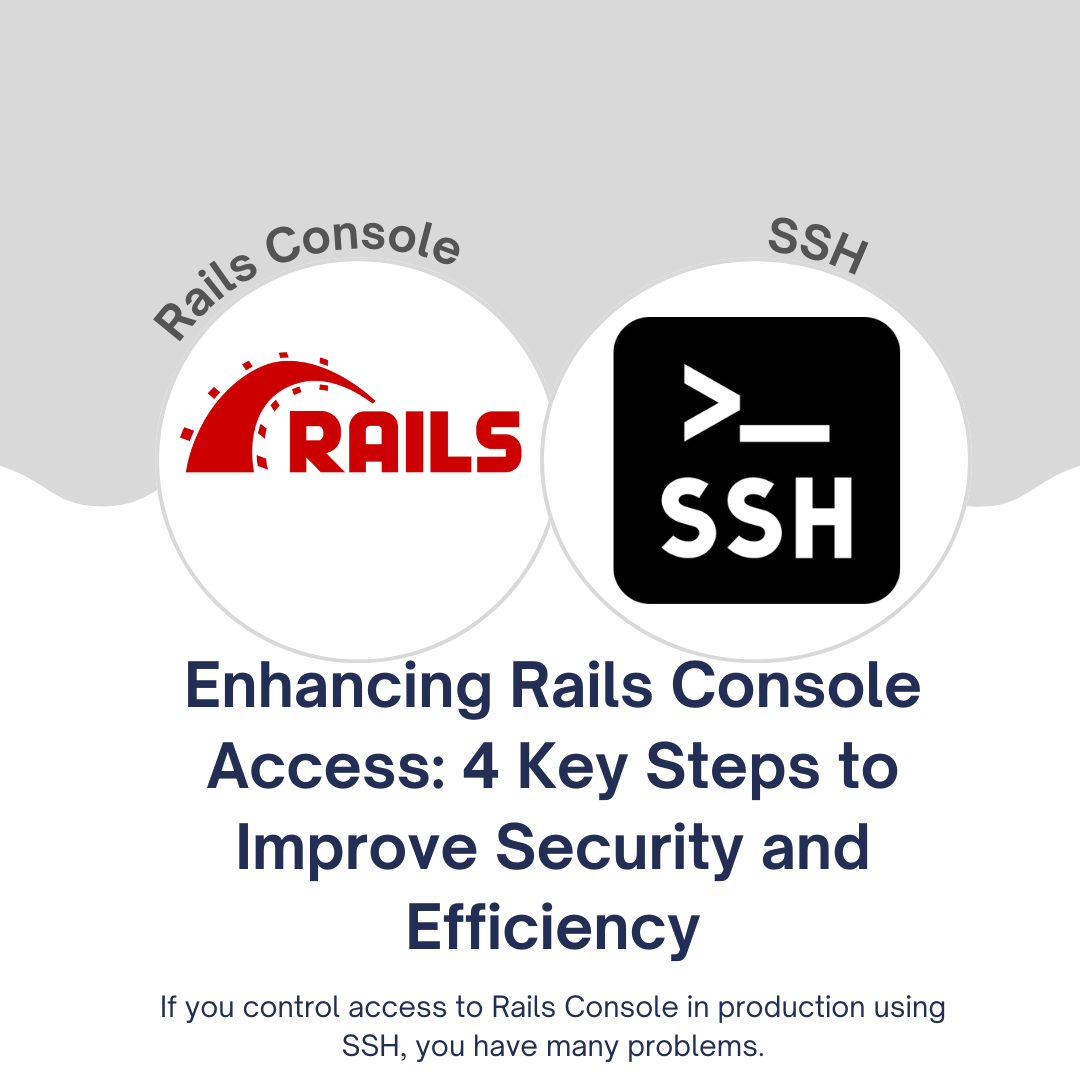Enhancing Rails Console Access: 4 Key Steps to Improve Security and Efficiency

If you're managing access to Rails Console in a production environment through SSH, you might not be aware of the hidden vulnerabilities and inefficiencies that can plague your workflow. In this article, we will discuss the five main issues associated with this approach, their impacts, and provide actionable steps to mitigate these challenges effectively.
The Need for Fast and Secure Access
Fast and secure access to Rails Console by your engineering team is crucial for maintaining product speed and ensuring a seamless development workflow. Timely troubleshooting, bug fixes, and incident resolutions depend on quick and efficient data access. Unfortunately, many teams adopt suboptimal solutions for granting access to Rails Console, leading to significant security risks or inefficient workflows. Let's dive into the key problems and potential solutions.
The Five Biggest Problems with SSH Access to Rails Console
- Building Infrastructure for Rails Console Access Using SSH is Painful: Setting up SSH-based access to Rails Console can be a cumbersome process, requiring meticulous configuration and management.
Hidden Vulnerabilities: Several hidden vulnerabilities exist in your access management, often overlooked but representing potential attack vectors. These vulnerabilities encompass:
a. Single Sign-on & MFA: Lack of Single Sign-on (SSO) and Multi-Factor Authentication (MFA) can leave your access vulnerable to unauthorized users.
b. Audit Trials and PII Protection: Inadequate audit trials and insufficient protection of Personally Identifiable Information (PII) can expose your organization to compliance and security risks.
c. Compliance (GDPR, PCI, SOC2, and HIPAA): Failure to meet compliance standards such as GDPR, PCI DSS, SOC2, or HIPAA can result in legal and financial consequences.
d. Developer Experience: Poor developer experience can hinder productivity and lead to frustration among your engineering team.
Low-Hanging Fruits for Reducing Vulnerabilities
To address these issues, consider implementing the following steps:
Step 1: Gradually Incorporate Essential Features
Rather than attempting a complete overhaul of your Rails Console access system, focus on gradual integration of crucial features:
- Add Rails Console to Existing Systems: If you already use Google Workspaces, for example, you can incorporate Rails Console into this system without the need for a separate LDAP directory.
- Implement SSO with MFA: Integrate Single Sign-on (SSO) with Multi-Factor Authentication (MFA) using solutions like Google OAuth or Cloud Shell tools from AWS/Google Cloud. Start with what you have to minimize complexity.
Step 2: Prioritize Features Based on Industry Needs
Consider your industry's specific requirements when prioritizing features:
- Developer Experience: If your industry isn't heavily regulated and doesn't handle sensitive data, prioritize improving developer experience, SSO, and MFA to streamline access.
- Compliance: Highly regulated industries, like fintech, should focus on meeting compliance standards such as PCI DSS. These industries may tolerate a more complex access process initially.
Step 3: Leverage Unified Access Solutions
To reduce complexity and streamline access management, consolidate access to various systems:
- Utilize Unified Tools: Invest in tools that offer access management for multiple systems, including Rails Console, AWS/GCP, databases, Kubernetes, and servers. This reduces the need for multiple tools, simplifying the management process.
Step 4: Add Friction to Unwanted Access Methods
Discourage the use of insecure or non-compliant access methods:
- Introduce Friction: Make unwanted access methods less appealing by adding friction to them. For instance, if engineers are bypassing secure access methods, consider implementing a form submission process or requiring Jira requests for access. This added complexity encourages adherence to the ideal, secure method over time.
By following these steps, you can address the hidden vulnerabilities associated with Rails Console SSH access, enhance security, streamline workflows, and ensure compliance with industry standards. Remember that a phased approach, tailored to your industry's needs, is key to a successful transition.
